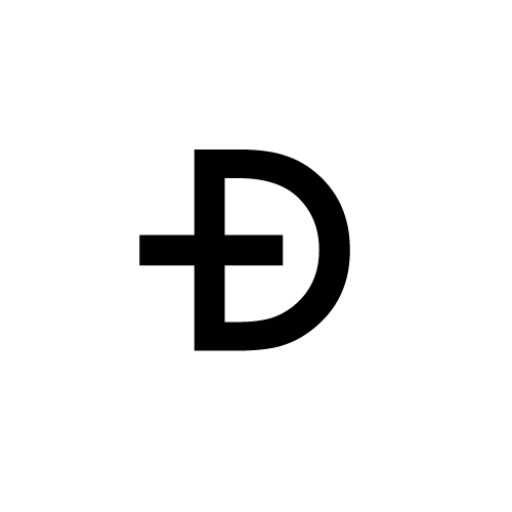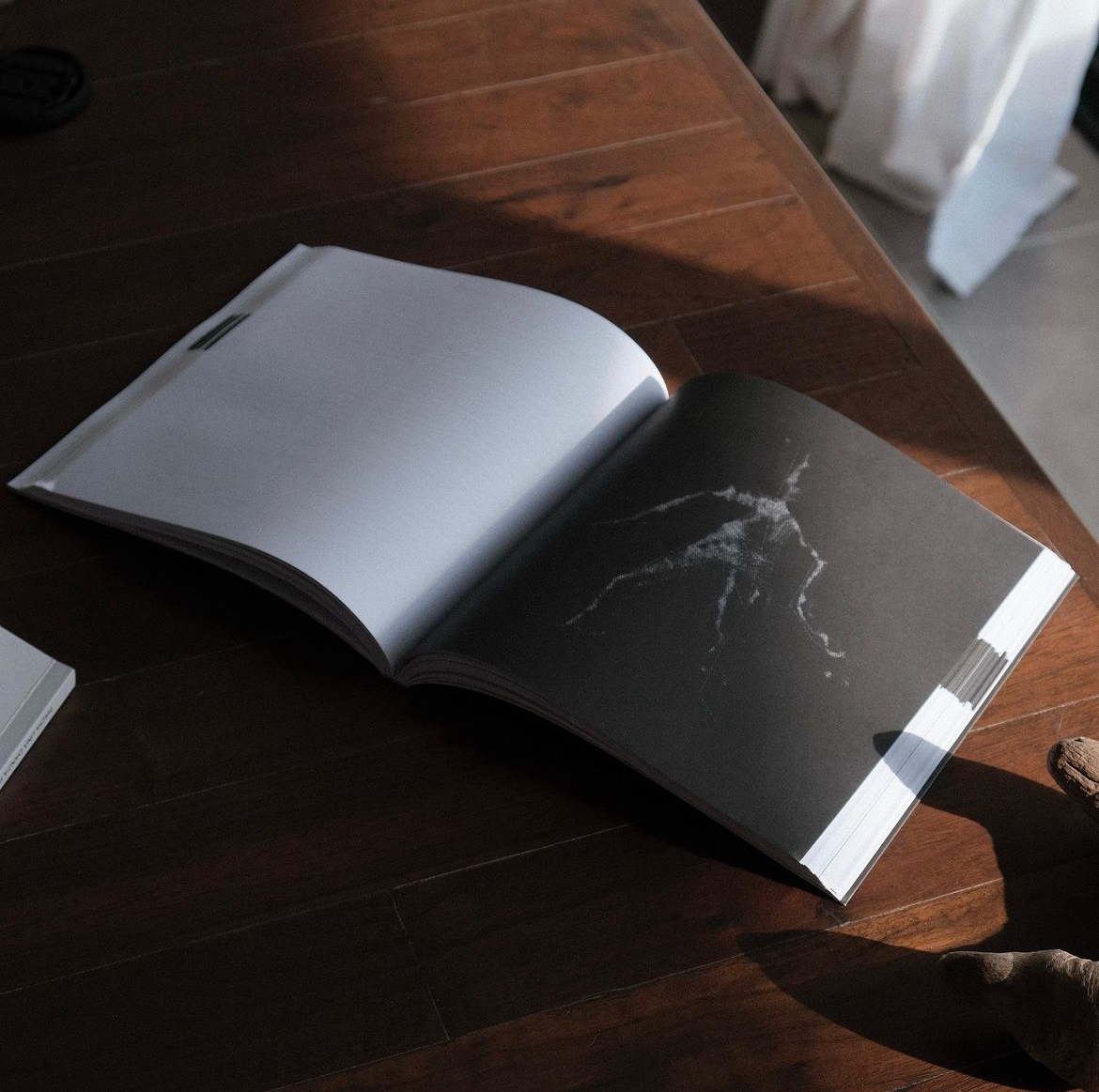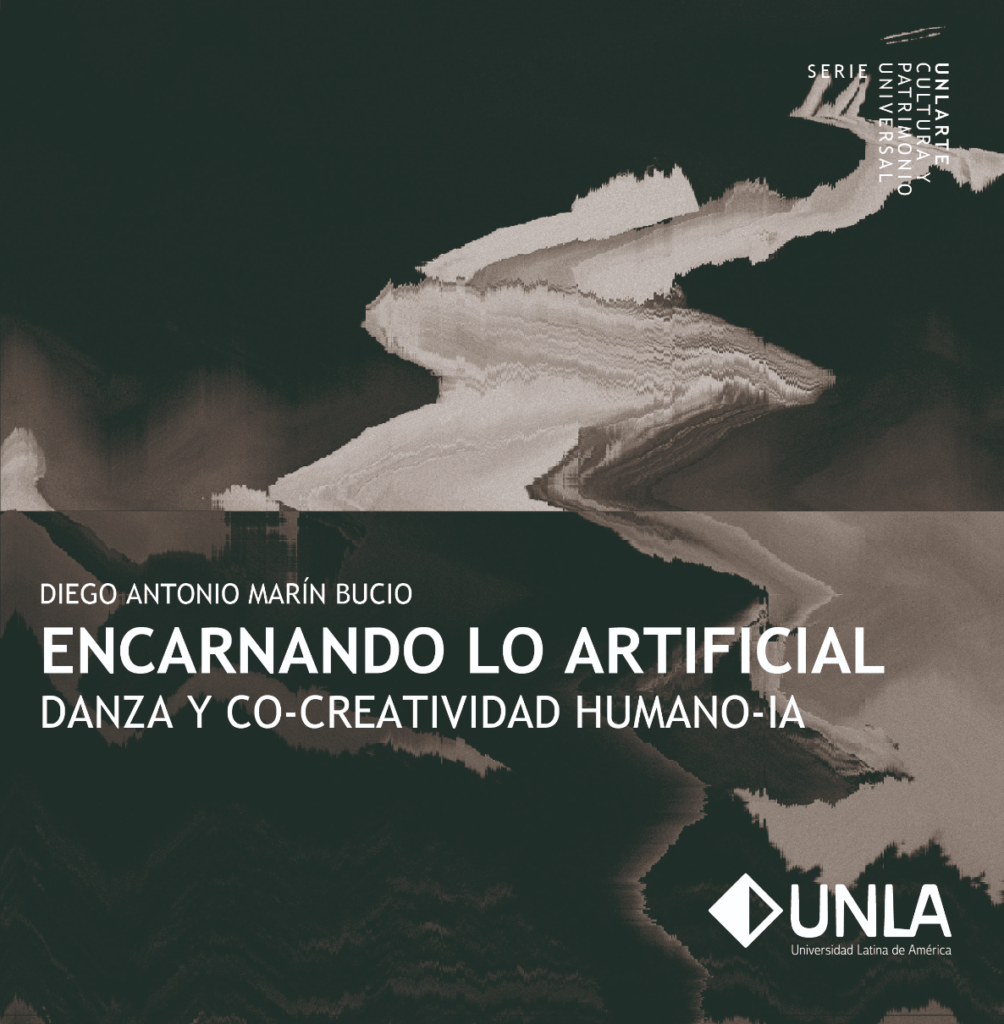By: Diego Marín | Copyright: 2022
Embodying the Artificial is the first book on AI Dance, offering a comprehensive study of human–AI collaborations in choreography and their aesthetic, ontological, and epistemological implications.
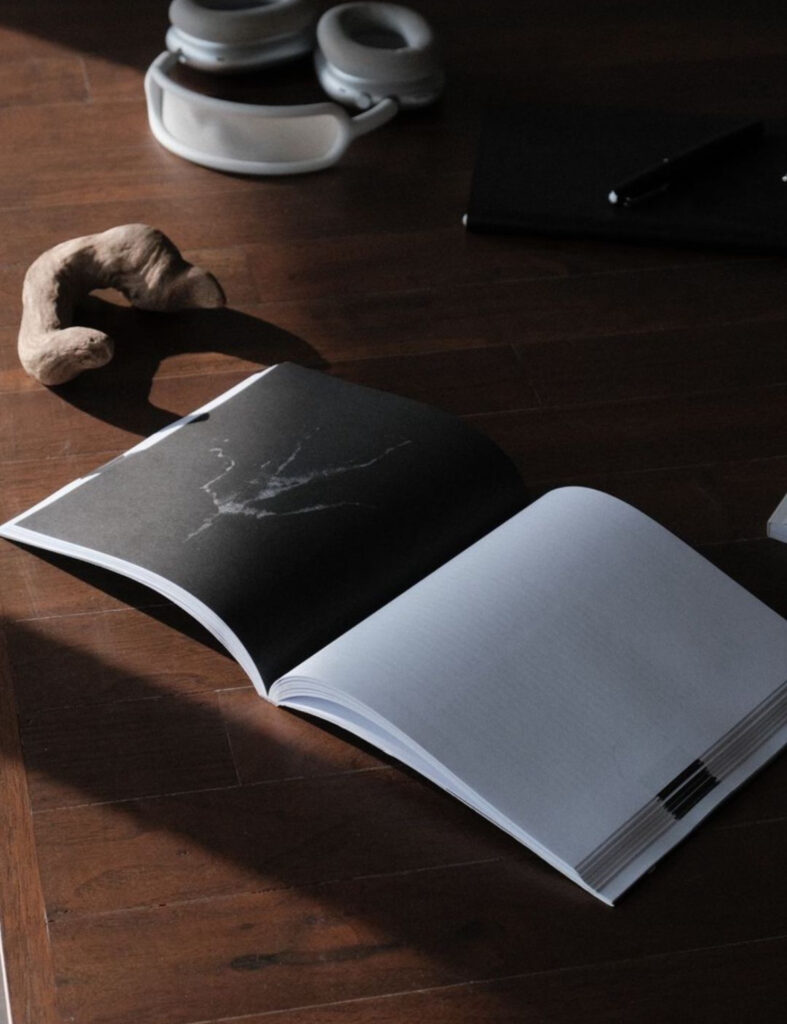
Book description
Embodying the artificial (Marín Bucio, 2024) is an ethnographic research that documents and analyses the author’s experience co-creating dance with an AI. presents a unique piece of research that proposes theoretical and practical foundations for understanding human-AI interaction in dance and performance.
Drawing on ethnographic data and philosophical approaches, the text analyzes the ontology and epistemology of AI dance, focusing on its kinesthetic dimensions within a human–AI framework. The author presents a perspective that reframes anthropocentric premises, challenging conventional understandings of dance and concepts such as the body and creativity.
The research outcomes bring a conceptual tool and framework for human-AI co-creation, offering clear concepts for categorising interdisciplinary creative processes with different types of machines. It also includes practical methods for human-AI dance.
The book also discusses the aesthetics of AI dance and the ethics of generative art in the cultural industries.
English version (2026)
by Intellect Books & Chicago University Press
(In print)
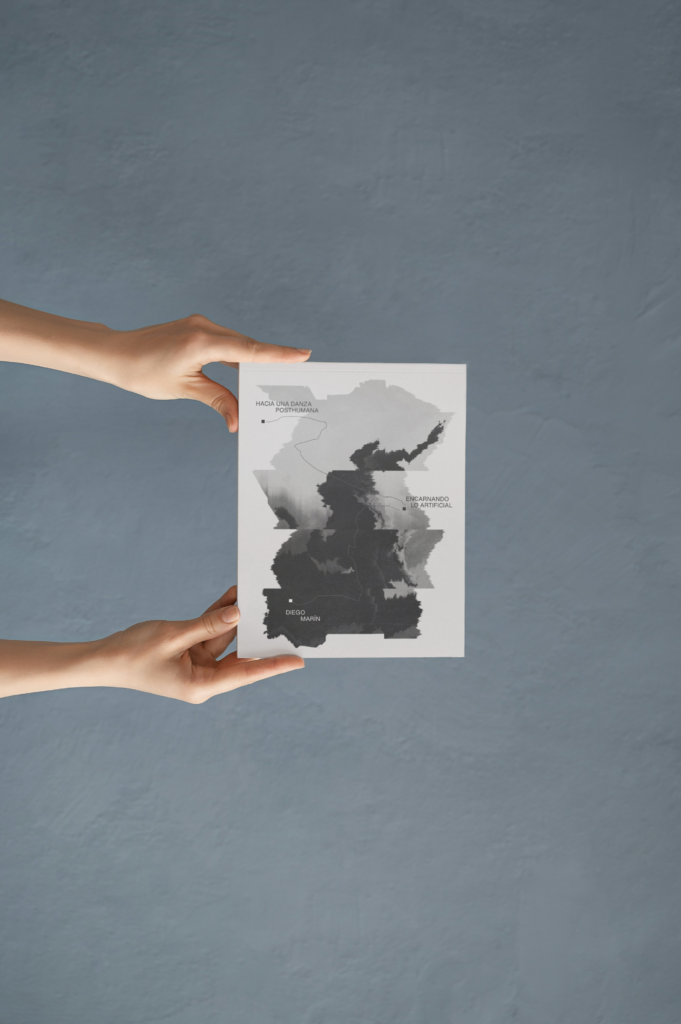
Table of content
Preface
Introduction
1. Technology and dance creation
1.1 A first encounter with AI
1.2 Intermedial dance
1.3 High-tech puppetry
1.4 Computer-assisted dance: A review of its history
1.5 Human-AI dance: Evolution and interactivity
1.6 Machinic movement matrix (MMM)
2. Dance creativity: Human vs AI
2.1 Creativity and human dance: Implications for artificial intelligence
2.1.1 Creativity from atomic and substantial ontologies
2.1.2 Construction of the dance experience
2.2 Artificial choreography and contingency in virtual space
2.3 Consciousness, intention and attention in the creation of dance
3. Glytch and human decoding of dance
3.1 The emergence of dance
3.2 Subjectivity and sense in dance
3.3 Artificial intelligence dance (AI dance)
3.3.1 Approaches to AI dance creation and execution
3.3.2 The ritual, the aura and the experience of a dancing AI
3.4 Kinesthetic experience: The virtual and the real
4. Design and observation of AI dance
4.1 Field research I: RITMO Center (University of Oslo)
4.2 Theoretical approach and research methods
4.2.1 State of the art
4.2.2 Data collected
4.2.3 Arrival at the laboratory
4.3 Dance as a source of technological development
5. Embodying the artificial
5.1 Embodied technology: Towards an extended creativity
5.2 Learning from the artificial
5.3 Sonification of dance: An experience of technological embodiment
5.4 Enhancement of the sensory and expressive body
5.5 Transhumanist communication: Agency, consciousness and negotiation
6. (Co)creation of dance with AI
6.1 The AI dancer
6.1.1 The AI dancer as agent and creative collaborator
6.3 Field research II: Embodying AI Workshop (University of the Arts London)
6.3.1 Experiment in human-AI creative collaboration
6.4 Ontological and interactive perspectives
6.4.1 Ontological considerations for human-AI dance co-creation
6.4.2 Interactive flow in human-AI dance co-creation
7. Posthuman dance: Dancing bodies of flesh, light and steel
7.1 Field research III: Leverhulme Centre for the Future of Intelligence (University of Cambridge)
7.1.1 Designing an AI dancer
7.1.2 Getting to know the AI dancer: Collaboration, interactivity and control in human-AI kinesthetic creativity
7.1.3 Hybrid dance: Creation of human and artificial intelligence
7.2 Expansion of the kinesic signifier in the new humanities
7.2.1 Bodies of light: The virtual being through the object
7.2.2 Bodies of flesh: Technoculture in the human creation of movement
7.2.3 Bodies of steel: Choreorobotics
8. Ethics, AI and dance
8.1 Limitations and ethics on staging a digital AI dancer
8.2 The kinematic identity
Epilogue
References
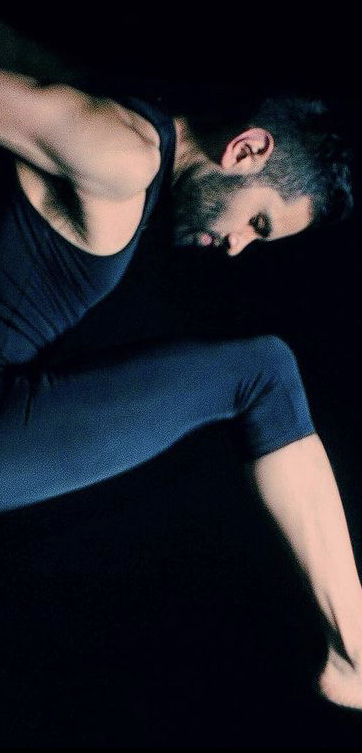
The author
DIEGO MARIN-BUCIO
Interdisciplinary artist and researcher with a strong foundation in movement and physicality. His work combines theatrical expression, multimedia experimentation, and the crafting of evocative, mysterious atmospheres. His artistic and academic paths are deeply connected, as he explores the intersections of computer technology, dance, and embodied cognition philosophies.
In 2025, Marín received the “Saberes Danzados” Award from Mexico’s National Institute of Fine Arts (INBAL) and was shortlisted for the One Dance UK Awards 2022 in the United Kingdom. He has also been honoured with the artistic fellowships “Interdisciplina y Transdisciplina 2022” from the SACPC and “PAPIAM-D 2025” from the Mexican Ministry of Culture.
In his book “Embodying the artificial”, Diego Marín introduced a conceptual tool and method of human-AI dance co-creation. His theoretical work transcends mere technological innovation to delve into a profound philosophical inquiry, questioning the very nature and boundaries of art.

